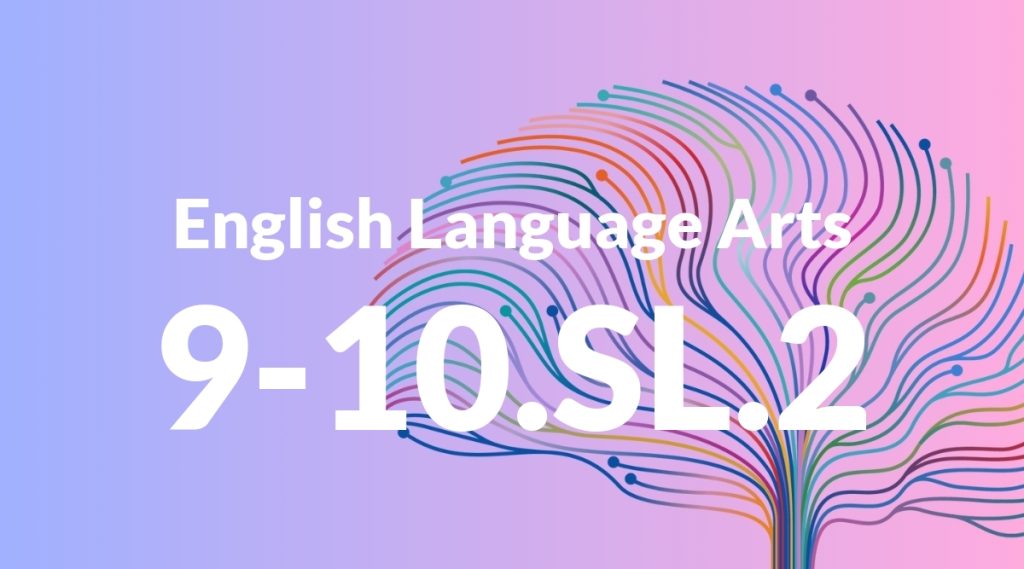Standard: 9-10.SL.2 – Integrate multiple sources of information presented in diverse media or formats (e.g., visually, quantitatively, orally) evaluating the credibility and accuracy of each source.
Grade level: Grade 9-10
Subject: English Language Arts
Domain: Speaking & Listening
Teacher Overview
This standard emphasizes the importance of integrating information from various media formats and evaluating the credibility and accuracy of each source. It is crucial for developing critical thinking and research skills, which are essential for academic success and informed citizenship. Students should have a foundational understanding of different media formats and basic research skills. They should also be familiar with critical thinking techniques.
Students will develop advanced research skills and the ability to synthesize information from diverse sources. They will also improve their critical evaluation skills, which are essential for higher education and informed citizenship.
Common Misconception 1
A common misconception is that all sources of information are equally credible. This is incorrect because the credibility of a source can vary based on the author’s expertise, the publication date, and the presence of supporting evidence.
Intervention 1
Introduce a lesson on identifying credible sources, focusing on the author’s credentials, publication date, and supporting evidence. Use real-world examples to illustrate these points.
Common Misconception 2
Another misconception is that information presented in a professional format is always accurate. This is not true, as even professionally presented information can be biased or incorrect.
Intervention 2
Teach students to fact-check information by cross-referencing it with other reliable sources, regardless of how professionally it is presented. Use case studies to demonstrate this practice.
Prerequisite Knowledge
Students should have a basic understanding of different media formats and how information can be presented visually, quantitatively, and orally. They should also be familiar with basic research skills and critical thinking techniques.
Subsequent Knowledge
After mastering this standard, students will develop advanced research skills, including the ability to synthesize information from diverse sources into coherent arguments. They will also improve their ability to critically evaluate the credibility of sources, a skill essential for higher education and informed citizenship.
Instructional Activities
- Conduct a media literacy workshop
- Analyze news articles for bias
- Compare scientific data from different studies
- Evaluate the credibility of a documentary
- Assess the reliability of online information
- Cross-reference information from multiple news outlets




